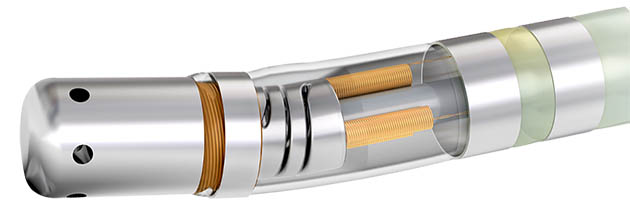Cardiac Catheter Ablation
Catheter ablation can be appropriate and effective for Atrial Fibrillation, Atrial Flutter, supraventricular tachycardia (SVT), premature ventricular contractions, Ventricular Fibrillation and Ventricular Tachycardia. Catheter ablation has become a very real option when considering long term treatment. Antiarrhythmic and AV nodal blocking drugs are associated with significant risks and complications that are often greater than the risks of a catheter-based cure. Often drugs require an acceptance of compromise because of side effects often more symptomatic than the rhythm problem itself. Success rates of ablation vary depending on the rhythm problem. Some SVT cure rates are as high as 95-98%. Some arrhythmias such as Afib may have a 20% likelihood of requiring a touch-up 3 months or more after the first ablation. With other SVT types, the likelihood of needing a touch up is incredibly low <2%.
The many categories and types of rhythm problems make it critical to consult with a rhythm specialist (Electrophysiologist / EP ) at least once, no matter what the rhythm problem is. In addition because of the vast differences between different types of afib, SVT, and even VT a discussion with an EP is critical rather than making assumptions based on a friend or family member’s experience. In many arrhythmias the effectiveness and remarkable safety of catheter ablation has made catheter ablation the first line treatment of choice and the standard of care before trying medication.
How It Works
The basic concept of catheter ablation is to eliminate irregular heart rhythms by ablating or destroying only the abnormal heart tissue leaving the normal healthy heart cells uninjured. The specialized catheter used in this procedure emits concentrated radiofrequency or RF which simply creates heat (like the filament in a light bulb getting hot) that destroys (ablates) the tissue causing the abnormal electrical impulse. The amount of heat is very precisely controlled with a computer and cooled fluid courses through the tip of the catheter.
The procedure is performed in an electrophysiology or EP lab. These rooms are specifically made for the diagnosis and treatment of arrhythmias. Patients will be connected to various monitoring devices throughout the procedure to check vitals and ensure safety. Intravenous medication will be administered to minimize any discomfort during the procedure. Some procedures are performed with IV sedation, often referred to as twilight, whereas others are performed with general anesthesia. The decision between the types of anesthesia is one that can be discussed in the office consultation and again at the time of the procedure.

The catheters are inserted through a specialized IV called a sheath. Thus there is rarely, if ever, the need for an incision or stitches. The sheath is similar in size, shape and length to a drinking straw with a valve on one end so that the catheter can go into the vein, but blood cannot get out. Sometimes the arrhythmia is continuous and ongoing before and during the procedure. However, if the arrhythmia is not ongoing the catheters can be used to add sequences of extra beats to induce the arrhythmia, with or without the use of IV medications to facilitate the onset of the rhythm. The highly advanced catheters used in this procedure offer an EP not only the ability to stimulate an intermittent arrhythmia but also create a Map of the exact origin(s) of the electrical problem.
The map is the most technologically advanced and demanding part of the procedure. It is created with the help of a specialized supercomputer called Carto. Carto is, in many ways, like a miniature GPS that communicates with electronics in the catheters to build a real-time, 3-dimensional picture of the heart. This 3D map includes detailed color coding and animated aspects to depict the heart’s electrical circuit speed and direction as well as the health of the underlying heart cells. After performing this stage of the EP Study, we are able to treat with ablation. During the ablation phase, Carto tells your electrophysiologist precisely where the catheter is to within 1mm as well as detailing the force with which he is pushing on the heart, the heat at the tip, and when the area has been treated effectively and safely.
The entire procedure can take as little as 1 hour, but often as long as 4 or more hours depending on the scope of the ablation and the origins of the irregular heart rhythm. Often Carto helps to show not only where the current Rhythm problem is, but other sources that would be likely to cause rhythm problems if left untreated. During this time, your EP will ablate the offending tissue. In Afib this includes building an ablation “wall” around the pulmonary veins. This is a technique known as a pulmonary vein isolation or PVI. PVI represents an exceptionally effective treatment for Afib and even some other arrhythmias. Because of our advanced imaging technology, we are also able to check on results in real-time to ensure the ablation was successful.
Once the procedure is complete, the catheters are removed in the same way that they were inserted. Patients will then be transferred to a recovery room.
A Progressive, Stepped Approach
Certain patients will respond better to one treatment versus another. That is why we approach arrhythmias in a stepped fashion, only employing more invasive techniques when conservative options have been exhausted. Typically, those who have not responded well to medication or those who are experiencing unacceptable side effects will be candidates for catheter ablation. In others we will err on the side of caution with a minimal ablation only to find out the arrhythmia is progressive requiring additional ablation at a later date if it recurs.
No Radiation
The need to expose patients to X-ray is now less necessary and some electrophysiologists focus not only on his best in industry success rates, but also on being a leader in safety. In fact, most centers of excellence still expose patients to 45-60 minutes of continuous radiation for these procedures, . In the rare circumstance fluoroscopy is needed, it is usually employed in a secondary confirmatory role. This offers exceptional benefits to both the patient and the medical staff. Click here to learn more about no-radiation ablations.
Benefits of Catheter Ablation
- Success rates can be greater than 90%
- Post-procedure complications rates are low
- Catheter ablation is often curative versus mediations that ameliorate and treat symptoms
- You will be most often be able to leave the day of your procedure
- You will be able to return to work in as few as 2-3 days and resume normal and even strenuous activity soon thereafter
Risks and Considerations
Complications of catheter ablation are rare. These can include:
- Bleeding, infection or damage to blood vessels at the site of catheter insertion
- Damage to the heart that may require further treatment
- Blood clots
- Stroke
- Death

